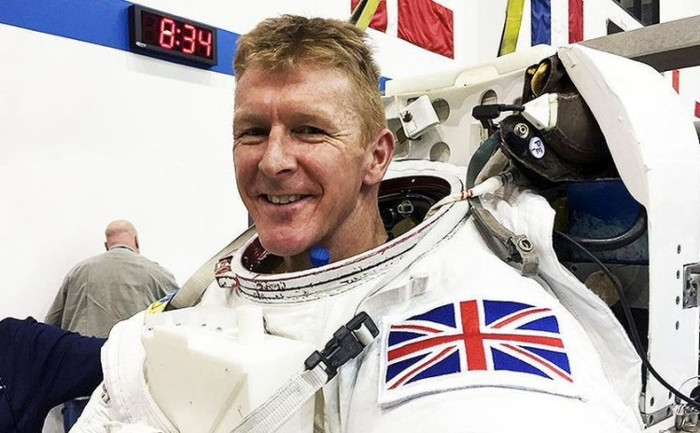First British astronaut to space
Astronaut Tim Peake works for NASA's European Space Agency, on December 15, 2015, became the first British national astronaut to set foot on the International Space Station (ISS).
Here, Peake will serve as the "citizen" of the universe (living outside the Earth) for 6 months. Before Peake there were many British cosmonaut pilots flying to ISS but at that time they were American citizenship.
Accompanying and staying with Tim Peake on the ISS Station are two other colleagues, a Russian Yury Malenchenko and an American Tim Kopra.
The Russian Soyuz missile with the TMA-19 number carrying the three astronauts above left the launch pad at Baikonur Cosmodrome in Kazakhstan and after 6 hours of flight had access to the ISS Station at 11:03 am GMT (18 hours 03 'in Vietnamese time) exactly as scheduled.

Tim Peake in cosmonaut costume.(Photo: Telegraph).
On the ISS, the "new cosmopolitan" trio will work side by side with the trio of "former cosmic residents" currently on ISS, including NASA's Scott Kelly and Sergei Volkov and Mikhail Kornienko of Russia. Meanwhile, three other former astronauts, Kjell Lindgren of NASA, Japan's Kimiya Yui and Russia's Oleg Kononenko, all went away and soon returned to Earth on December 18, 2015.
ISS station with total investment up to 100 billion USD but only enough room for 6 people! The station is in orbit around the Earth and 400 km from Earth. With a cruising speed of about 28,000 km / hour, ISS takes 90 minutes to complete a cycle around our planet.
The ISS was launched into orbit in 1998 and two years later; On November 2, 2000, ISS began the task of receiving the first three astronauts including NASA's Bill Shepard and two Russian astronauts Yuri Gidzenko and Sergei Krikalev on a 136-day working trip. .
It was the first expedition team and the current expedition team was the 45th team. So there were a total of 45 expedition teams with more than 220 astronauts in turn working and living on this ISS International Space Station.
- The British missed the opportunity to fly into the first universe
- 2013 - Russia sends female astronauts into space
- Celebrating 53 years of astronaut Yuri Gagarin flying into space
- Now you can train yourself to become an astronaut through ... smartphone
- Journey thousands of people choose one to become NASA astronaut
- Astronaut eat?
- You will be surprised to know what astronauts eat every day
- Video: How is the astronaut peeing in the universe?
- How to eat and sleep on other universes in Earth?
- Video: A miserable astronaut squeezes a wet towel on a space station
- 'Astronaut Buzz Lightyear is in the longest space
- The first African-American traveler set foot on ISS
 The quiet, mysterious life of Vietnam's first female doctorate 'Western Studies'
The quiet, mysterious life of Vietnam's first female doctorate 'Western Studies' The 10-year-old girl has higher IQ than Albert Einstein and Stephen Hawking
The 10-year-old girl has higher IQ than Albert Einstein and Stephen Hawking China opens the cable-stayed bridge with the tallest concrete tower in the world
China opens the cable-stayed bridge with the tallest concrete tower in the world The most 'astronaut' astronaut in the world: Abandoned in outer space for 311 days!
The most 'astronaut' astronaut in the world: Abandoned in outer space for 311 days!